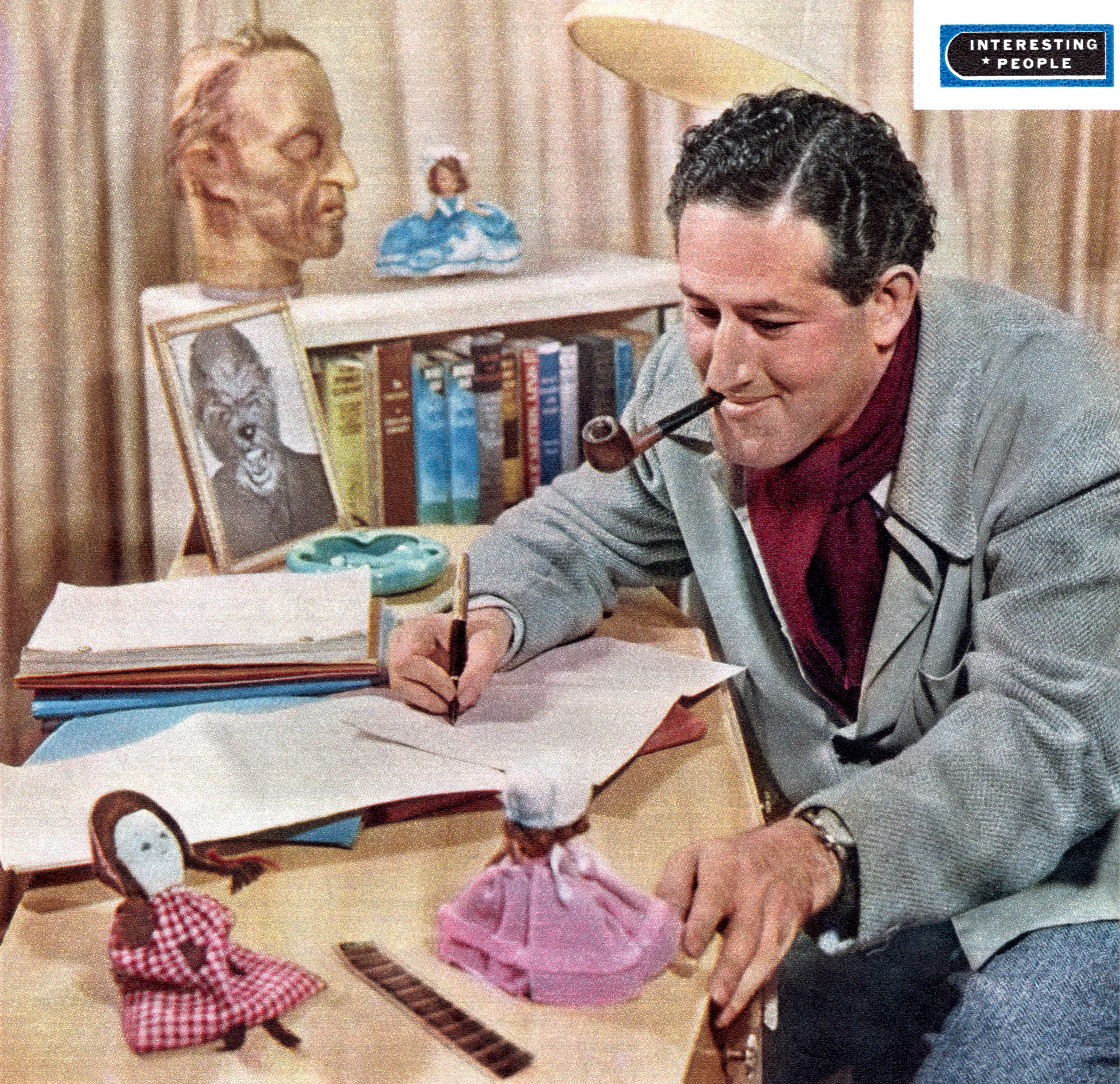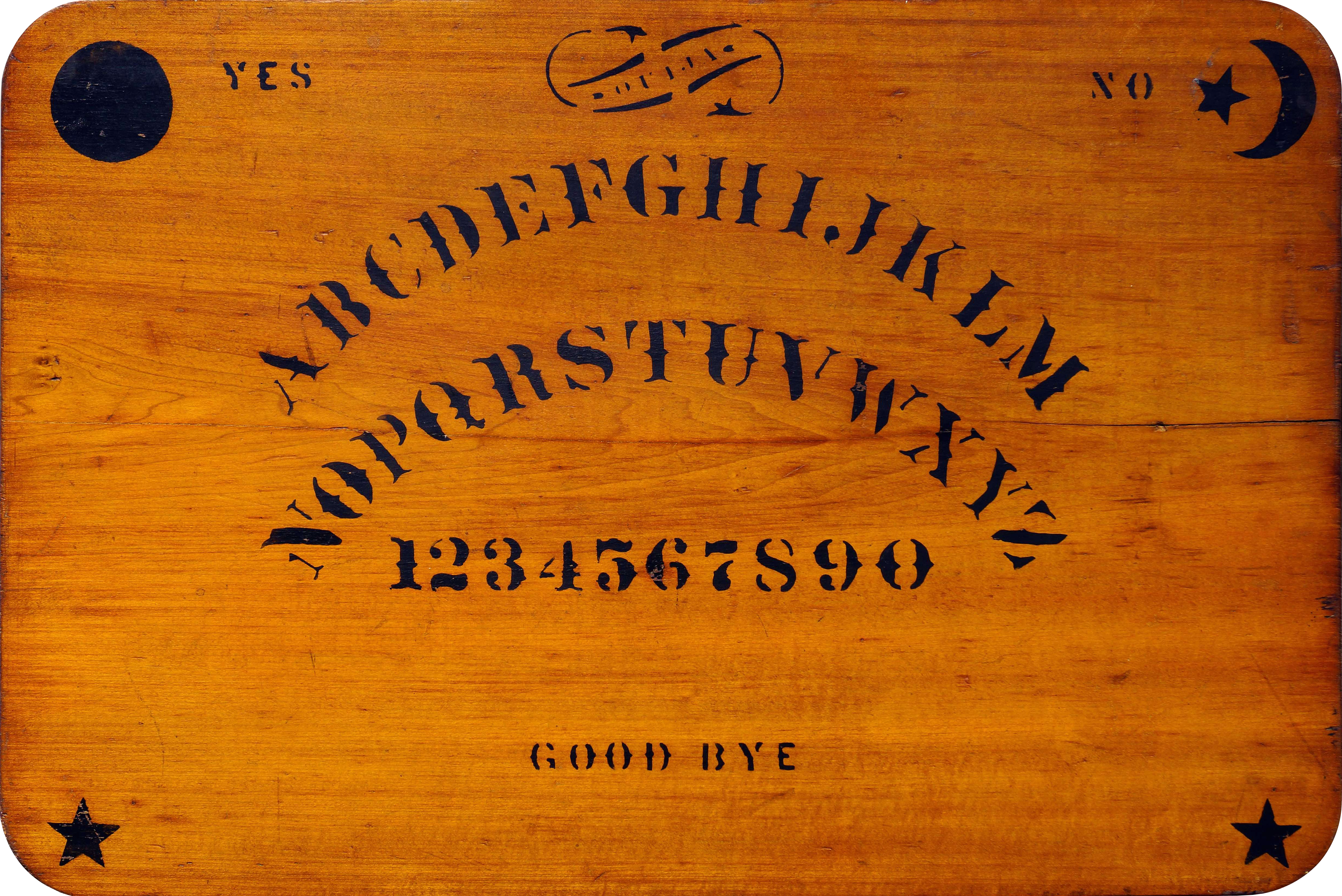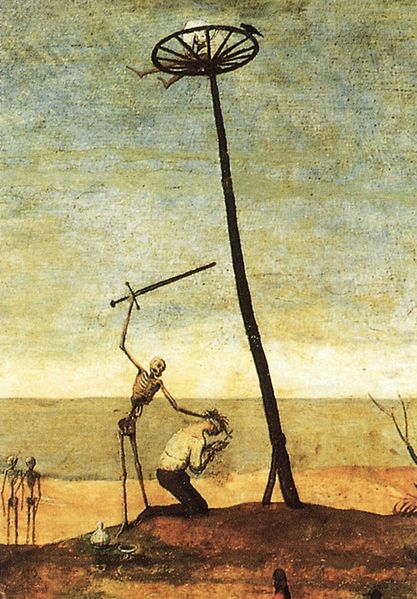|
13 Ghosts
''13 Ghosts'' is a 1960 American supernatural horror film produced and directed by William Castle, written by Robb White and starring Rosemary DeCamp, Margaret Hamilton, Charles Herbert, Martin Milner, Jo Morrow, John van Dreelen, and Donald Woods. ''13 Ghosts'' was released in 1960 as a double bill with '' 12 to the Moon'', '' The Electronic Monster'' or ''Battle in Outer Space'', depending on the film market. Plot The occultist Dr. Plato Zorba bequeaths a large house to his impoverished nephew Cyrus. Along with his wife Hilda, teen daughter Medea and adolescent son, Buck, Cyrus is informed by lawyer Ben Rush that the house comes with ghosts that Dr. Zorba has collected from around the world. The will stipulates that the family must stay in the house and cannot sell it, or it will be turned over to the state. The family is shocked to find that the house is really haunted by 12 ghosts. The furnished mansion also comes with creepy housekeeper, Elaine, who conducts seances, and ... [...More Info...] [...Related Items...] OR: [Wikipedia] [Google] [Baidu] |
William Castle
William Castle (born William Schloss Jr.; April 24, 1914 – May 31, 1977) was an American film director, producer, screenwriter, and actor. Orphaned at 11, Castle dropped out of high school at 15 to work in the theater. He came to the attention of Columbia Pictures for his talent for promotion and was hired. He learned the trade of filmmaking and became a director, acquiring a reputation for the ability to churn out competent B-movies quickly and on budget. He eventually struck out on his own, producing and directing Thriller (genre), thrillers, which, despite their low budgets, he effectively promoted using film promotion, gimmicks, a trademark for which he is best known. He was also the producer for ''Rosemary's Baby (film), Rosemary's Baby''. Personal life Castle was born in New York City, the son of Saidie (Snellenberg) and William Schloss. His family was Jewish. His mother died when he was nine. When his father followed a year later, he was left an orphan at the age of 11 ... [...More Info...] [...Related Items...] OR: [Wikipedia] [Google] [Baidu] |
Battle In Outer Space
is a 1959 Japanese science fiction film directed by Ishirō Honda, with special effects by Eiji Tsuburaya. Plot In 1965, a series of mysterious and devastating incidents are happening on Earth. These incidents range from a railroad bridge levitated off the ground causing a train wreck in Japan; an ocean liner lifted out of the Panama Canal by a waterspout, destroying it; severe flooding in Venice, Italy; and the destruction of the J-SS3 space station. A UN-connected international meeting is called at the Space Research Center in Japan. Major Ichiro Katsumiya, Professor Adachi and Dr. Richardson open the conference and describe the disasters, adding that the survivors suffered from extreme frostbite. Dr. Richardson theorizes that some unknown force lowered the temperatures of the objects so as to lower the Earth's gravitational pull, thus making the objects easier to lift, regardless of their size and weight. Katsumiya determines that such an action could only be accomplished by ... [...More Info...] [...Related Items...] OR: [Wikipedia] [Google] [Baidu] |
Variety (magazine)
''Variety'' is an American media company owned by Penske Media Corporation. The company was founded by Sime Silverman in New York City in 1905 as a weekly newspaper reporting on theater and vaudeville. In 1933 it added ''Daily Variety'', based in Los Angeles, to cover the motion-picture industry. ''Variety.com'' features entertainment news, reviews, box office results, cover stories, videos, photo galleries and features, plus a credits database, production charts and calendar, with archive content dating back to 1905. History Foundation ''Variety'' has been published since December 16, 1905, when it was launched by Sime Silverman as a weekly periodical covering theater and vaudeville with its headquarters in New York City. Silverman had been fired by ''The Morning Telegraph'' in 1905 for panning an act which had taken out an advert for $50. As a result, he decided to start his own publication "that ouldnot be influenced by advertising." With a loan of $1,500 from his father- ... [...More Info...] [...Related Items...] OR: [Wikipedia] [Google] [Baidu] |
The New York Times
''The New York Times'' (''the Times'', ''NYT'', or the Gray Lady) is a daily newspaper based in New York City with a worldwide readership reported in 2020 to comprise a declining 840,000 paid print subscribers, and a growing 6 million paid digital subscribers. It also is a producer of popular podcasts such as '' The Daily''. Founded in 1851 by Henry Jarvis Raymond and George Jones, it was initially published by Raymond, Jones & Company. The ''Times'' has won 132 Pulitzer Prizes, the most of any newspaper, and has long been regarded as a national " newspaper of record". For print it is ranked 18th in the world by circulation and 3rd in the U.S. The paper is owned by the New York Times Company, which is publicly traded. It has been governed by the Sulzberger family since 1896, through a dual-class share structure after its shares became publicly traded. A. G. Sulzberger, the paper's publisher and the company's chairman, is the fifth generation of the family to head the pa ... [...More Info...] [...Related Items...] OR: [Wikipedia] [Google] [Baidu] |
Howard Thompson (film Critic)
Howard Thompson (October 25, 1919 – March 10, 2002) was an American journalist and film critic whose career of forty-one years was spent at ''The New York Times''. Henry Howard Thompson Jr. was born in Natchez, the seat of Mississippi's Adams County. He began his college studies at Louisiana State University, but left to serve as a paratrooper in the United States Army during World War II. During this period, Thompson was captured and spent six months in a German prisoner of war camp. After demobilisation, he continued his studies at Columbia University. In 1947, he joined ''The New York Times'' as an office boy in the personnel department, and soon moved to the movie section as a clerk to Bosley Crowther, the film critic at the ''Times''. He later advanced to a reporter who frequently interviewed film personalities and finally became a critic in the late 1950s. The byline on reviews during his early years was commonly indicated as "H.H.T." or "HHT". He also served as chairman ... [...More Info...] [...Related Items...] OR: [Wikipedia] [Google] [Baidu] |
Cellophane
Cellophane is a thin, transparent sheet made of regenerated cellulose. Its low permeability to air, oils, greases, bacteria, and liquid water makes it useful for food packaging. Cellophane is highly permeable to water vapour, but may be coated with nitrocellulose lacquer to prevent this. Cellophane is also used in transparent pressure-sensitive tape, tubing and many other similar applications. Cellophane is compostable and biodegradable, and can be obtained from biomaterials. Production, however, uses carbon disulfide (CS2), which has been found to be highly toxic to workers. The lyocell process, however, can be used to produce cellulose film without involving carbon disulfide. "Cellophane" is a generic term in some countries, while in other countries it is a registered trademark. Production Cellulose from wood, cotton, hemp, or other sources is dissolved in alkali and carbon disulfide to make a solution called viscose, which is then extruded through a slit into a bath of dilu ... [...More Info...] [...Related Items...] OR: [Wikipedia] [Google] [Baidu] |
Black-and-white
Black-and-white (B&W or B/W) images combine black and white in a continuous spectrum, producing a range of shades of grey. Media The history of various visual media began with black and white, and as technology improved, altered to color. However, there are exceptions to this rule, including black-and-white fine art photography, as well as many film motion pictures and art film(s). Photography Contemporary use Since the late 1960s, few mainstream films have been shot in black-and-white. The reasons are frequently commercial, as it is difficult to sell a film for television broadcasting if the film is not in color. 1961 was the last year in which the majority of Hollywood films were released in black and white. Computing In computing terminology, ''black-and-white'' is sometimes used to refer to a binary image consisting solely of pure black pixels and pure white ones; what would normally be called a black-and-white image, that is, an image containing shades of ... [...More Info...] [...Related Items...] OR: [Wikipedia] [Google] [Baidu] |
Four-poster Bed
__NOTOC__ A four-poster bed is a bed with four vertical columns, one in each corner, that support a tester, or upper (usually rectangular) panel. This tester or panel will often have rails to allow curtains to be pulled around the bed. There are a number of antique four-poster beds extant dating to the 16th century and earlier; many of these early beds are highly ornate and are made from oak. Four-poster beds were developed for several practical reasons. Bedrooms often had drafts and could be cold at night: the curtains could be closed to help keep the occupant of the bed warm. The curtains also helped to give privacy to the sleepers, since servants and bodyguards often slept in the same room, especially in the case of royalty, served by a special group of servants of the bedchamber (usually noble courtiers), lords and ladies of the bedchamber, esquires of the body, etc. In the mediaeval era and up to the 18th century beds were items of furniture on which great personages and r ... [...More Info...] [...Related Items...] OR: [Wikipedia] [Google] [Baidu] |
Ouija
The ouija ( , ), also known as a spirit board or talking board, is a flat board marked with the letters of the Latin alphabet, the numbers 0–9, the words "yes", "no", occasionally "hello" and "goodbye", along with various symbols and graphics. It uses a planchette (small heart-shaped piece of wood or plastic) as a movable indicator to spell out messages during a séance. Participants place their fingers on the planchette, and it is moved about the board to spell out words. "Ouija" is a trademark of Hasbro, but is often used generically to refer to any talking board. Spiritualists in the United States believed that the dead were able to contact the living and reportedly used a talking board very similar to a modern Ouija board at their camps in the U.S. state of Ohio in 1886 to ostensibly enable faster communication with spirits. Following its commercial introduction by businessman Elijah Bond on 1 July 1890, the Ouija board was regarded as an innocent parlor game unrelate ... [...More Info...] [...Related Items...] OR: [Wikipedia] [Google] [Baidu] |
Lion Taming
Lion taming is the taming and training of lions, either for protection or for use in entertainment, such as the circus. The term often applies to the taming and display of lions and other big cats such as tigers, leopards, jaguars, black panthers, cheetahs, and cougars. People often use lion taming as a metaphor for any dangerous activity. Lion taming occurs in zoos around the world to enable the keepers to carry out medical procedures and feedings. The Captive Animals Protection Society maintains that animal welfare cannot be guaranteed in circuses. Notable lion tamers :''In chronological order'' * George Wombwell (1777–1850), founder of Wombwell's Traveling Menagerie, raised many animals himself, including the first lion bred in captivity in Britain. * Isaac A. Van Amburgh (1811–1865), American animal trainer who developed the first trained wild animal act in modern times. He was known for acts of daring, such as placing his head inside the jaws of a wild cat,''History ... [...More Info...] [...Related Items...] OR: [Wikipedia] [Google] [Baidu] |
Decapitation
Decapitation or beheading is the total separation of the head from the body. Such an injury is invariably fatal to humans and most other animals, since it deprives the brain of oxygenated blood, while all other organs are deprived of the involuntary functions that are needed for the body to function. The term ''beheading'' refers to the act of deliberately decapitating a person, either as a means of murder or as an execution; it may be performed with an axe, sword, knife, machete or by mechanical means such as a guillotine or chainsaw. An executioner who carries out executions by beheading is sometimes called a headsman. Accidental decapitation can be the result of an explosion, a car or industrial accident, improperly administered execution by hanging or other violent injury. Suicide by decapitation is rare but not unknown. The national laws of Saudi Arabia, Yemen, and Qatar permit beheading; however, in practice, Saudi Arabia is the only country that continues to behead i ... [...More Info...] [...Related Items...] OR: [Wikipedia] [Google] [Baidu] |
Executioner
An executioner, also known as a hangman or headsman, is an official who executes a sentence of capital punishment on a legally condemned person. Scope and job The executioner was usually presented with a warrant authorising or ordering him to ''execute'' the sentence. The warrant protects the executioner from the charge of murder. Common terms for executioners derived from forms of capital punishment—though they often also performed other physical punishments—include hangman (hanging) and headsman (beheading). In the military, the role of executioner was performed by a soldier, such as the ''provost''. A common stereotype of an executioner is a hooded medieval or absolutist executioner. Symbolic or real, executioners were rarely hooded, and not robed in all black; hoods were only used if an executioner's identity and anonymity were to be preserved from the public. As Hilary Mantel noted in her 2018 Reith Lectures, "Why would an executioner wear a mask? Everybody k ... [...More Info...] [...Related Items...] OR: [Wikipedia] [Google] [Baidu] |


.png)




.jpg)

